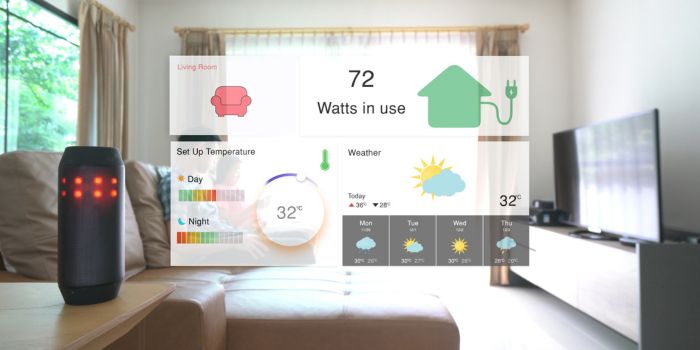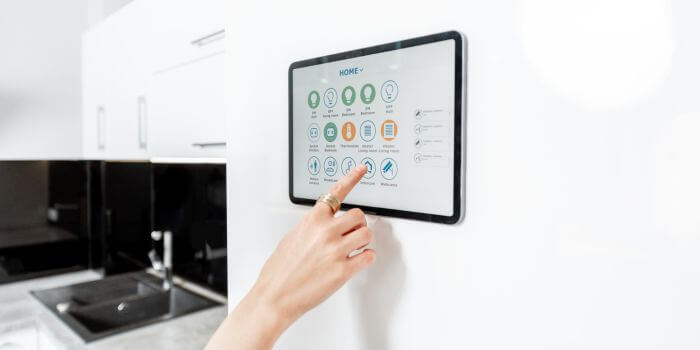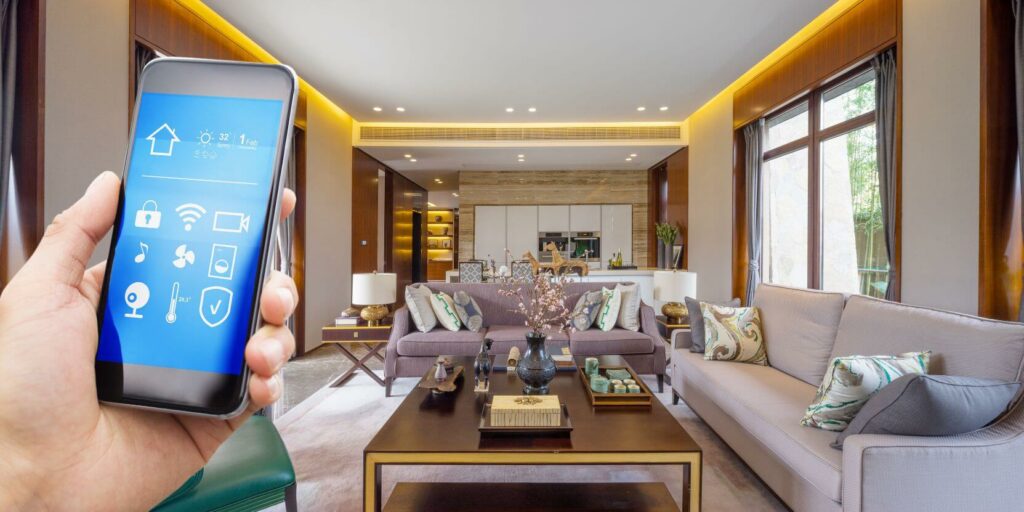Table of Contents
Smart Homes
The way you interact with your living environments has been completely transformed by smart home technology, which provides increased efficiency, convenience, and security.
Aiming to create a contemporary, connected living space requires careful thought on how to incorporate this technology smoothly into house design.
As technology advances and makes our lives easier, the adoption of smart home features will continue to rise.
Let’s take a look at how smart home tech can improve the quality of your life at home.
The Foundation of Connectivity: Building a Robust Network Infrastructure
The first step towards a flawless smart home experience is building a strong network infrastructure.
It is critical to design a network that can satisfy the needs of various linked devices. Ensuring reliable Wi-Fi coverage throughout the house is crucial, considering elements like signal strength, possible interference, and scalability for future additions.

The smooth integration of electronic devices into the home is made possible by the addition of cable connections, mesh systems, and high-quality routers to the foundation.
Make sure to choose a reliable high-speed internet provider. Ask them about their speed options, if they have customers with smart home set ups.
Shop for competitive pricing options for different providers before choosing the best one for you.
Intelligent Lighting Solutions: Enhancing Ambiance and Efficiency
The world of intelligent lighting systems goes beyond conventional light switches, giving homeowners the flexibility to customize the atmosphere and improve the energy economy.
The incorporation of intelligent lighting design includes the use of smart fixtures, bulbs, or systems that provide functions like automation, color modification, and remote control.
Timers can control when to dim or turn up the lights in your home as the night grows darker.
Motion detectors and smart dimmers should be carefully considered in order to maximize energy savings and produce dynamic lighting experiences.
Seamless Climate Control: Smart Thermostats and HVAC Integration
One of the key characteristics of a smart home is effortless climate management, which calls for the installation of a smart thermostat that can be controlled remotely, learn user preferences, and adjust to schedules.
Energy-efficient temperature control is made easier by integrating HVAC systems into the networked environment.
To ensure a comfortable and effective atmosphere, design considerations should include the thoughtful placement of sensors for appropriate climate management and zoning.

Having effective climate control can reduce energy costs and balance the temperature in your home to always be comfortable adapting to the season and climate of your region.
Smart thermostats can also be integrated into heated flooring. Heated flooring is a dynamic and fantastic addition to any smart home.
You will never have to worry about having cold floors on a snowy winter morning again.
Just like your smart thermostat will control temperature throughout the rest of the house, if you have it integrated with your in-floor electric heating system, it will be able to turn the heat up or down depending on the temperature in your home.
Before considering an electric floor system, you should consider that your current flooring would need to be replaced to install electric flooring and will need to consult a licensed professional for installation.
Security Beyond Locks and Keys: Smart Home Security Integration
The addition of clever security features improves the safety and comfort of homeowners.
When building with intelligent locks, doorbell recording devices, and motion-activated camera systems in mind, careful planning, strategic placement for best coverage, and seamless integration with centralized security systems are imperative.
There are many helpful security systems you can choose from. Some allow the ability for you to monitor cameras from your phone while away for the house and speak to people at the door. Explore different options to find ones with the right solutions for your needs.
The clever safety features that are skillfully incorporated into the structure while preserving its aesthetic appeal serve to reinforce the overall integrity of the house.
These integrated security systems are more than simply an improvement; they have become a vital component of the house, offering protection from any attacks and a sense of assurance.
Entertainment in Every Room: Multi-Room Audio and Video Systems

Modern home designs use distributed audio and smart speaker multi-room audio systems to integrate entertainment across the house effortlessly.
Everywhere in the house, residents may listen to music or podcasts, which highlights the necessity for covert wiring and strategic speaker placement to preserve unobtrusive aesthetics.
Smart audio systems allow for balancing the audio of your favorite films and music, ensuring that all parts of your favorite entertainment can be heard clearly.
By providing centralized management and connection for an immersive and interconnected home environment, smart TVs and media rooms significantly improve the entertainment experience.
The Heart of the Smart Home: Centralized Automation Hubs
The brains of a smart home are centralized automation hubs, which link and coordinate different gadgets to guarantee seamless operation.
It is essential to place these hubs strategically in order to provide the best possible connection with smart devices around the house.
To create a flexible and dynamic smart home ecosystem, design considerations should take into account accessibility, disturbance mitigation, and potential advances in smart technology.
User-Friendly Interface: Intuitive Control and Accessibility
User-friendly control methods are prioritized in seamless integration, even when it comes to the user interface.
Smart device interactions may be made simpler by designing voice-activated systems, mobile applications, or intuitive control panels.
To guarantee that the connected home experience is inclusive and meets a variety of demands, accessibility must be given careful consideration.
Every tenant may access and enjoy the benefits of smart home technology with the help of a well-designed user interface.
Conclusion
Careful planning and consideration of the unique needs and preferences of the inhabitants are necessary to create a smart home featuring seamless integration.
A modern, connected living area may be a benefit for homeowners if they prioritize user-friendly interfaces, plan for connectivity, and incorporate the appropriate technology.
When properly planned, smart houses improve everyday life while also improving the overall effectiveness, security, and curb appeal of the building.
Also, Read
5 Styling Secrets to Make Your Home Look Amazing
Types of Windows Used for Houses and Buildings
How to Design and Build Your Own House?
Building Inspections: 5 Tips for Landlords and Home Buyers